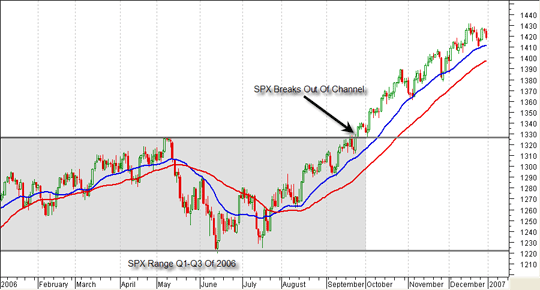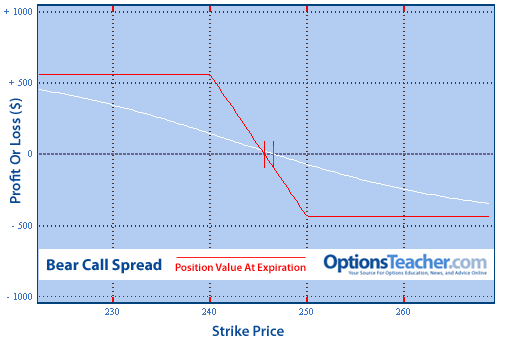What Is An Option Spread
Post on: 27 Май, 2015 No Comment

There are many types of spreads but most fall into 3 categories, Vertical, Horizontal, and Diagonal. A vertical spread has two option legs with the same expiration date. Vertical spreads are either bullish or bearish, since they typically require the underlying stock to move in a certain direction to be profitable. Horizontal spreads have two options with the same strike price but different expirations. This type of spread, also known as a Calendar Spread, is neither bearish or bullish, it will profit as a result of the time premium on the short leg eroding faster then the time premium on the long leg. A diagonal spread has both different strike prices and different expiration dates. There are various applications of a diagonal spread, such as rolling forward a vertical spread, horizontal spread or straddle at or near expiration.
Vertical Spreads
Bull Call
A spread trader that buys a call in anticipation of a stock rising can reduce the cost of the long call by selling a cheaper out of the money call. This is known as a Bull Call spread. The risk, which is the cost of the long call, is reduced by the credit received from selling the out of the money call. There is a tradeoff, since the potential profit is limited by the potential losses on the out of the money call
Objectives of Trading Spreads
The maximum gain from a Bull Call is the difference between the strike prices, called the spread. less the cost of the trade, called the debit. The maximum loss is the cost of the trade. When the spread is greater than the debit, then the potential gain is greater than the maximum loss. Given that is equally likely for stock to go up than down, the gain from the winning trades will more than offset the losses from the losing trades.
The maximum loss is the cost of the trade, and the amount of capital required to enter the Bull Call spread equals the initial cost of the spread. The capital required to purchase stock can be used to buy a spread covering many times as much stock. Although possible, such a spread position would be subject to enormous swings in value as a result of relatively small changes in the underlying stock price, and therefore have enormous risk compared to holding the stock.
Net Credit spreads may offer a slight advantage if you are trading on margin, since the cost of margin interest can significantly outweigh the gains from credit interest

Bull Put
A trader anticipating a rise in the stock price may opt to sell an in the money put instead of buying a call. The put will drop in value as the time premium drops, providing some profit even if the stock price does not change. The spread trader purchases an out of the money put to protect against losses in the short put. The out of the money put costs less than the in the money put, and the trade generates immediate income. The net credit from the trade can offset margin debt and reduce the amount of margin interest paid. Both the Bull Call and the Bull Put profit when the underlying stock rises.
Choosing the Best Spread
Which is a better trade for the bullish investor, the Bull Call or Bull Put? Net credit spreads (Bull Puts & Bear Calls) have the advantage of generating immediate capital, but that does not improve the potential for profit on the trade. A trade with a high spread to credit/debit ratio is desirable, since the potential to profit is greater than the potential loss. A high spread to debit/credit ratio increases the maximum profit but does not increase the likelihood of profit. The most desirable spreads are where the more expensive leg is sold. Expensive does not necessarily mean a higher price. An in the money option will have a higher price than an out of the money option, but the out of the money option may have more time premium associated with it.














